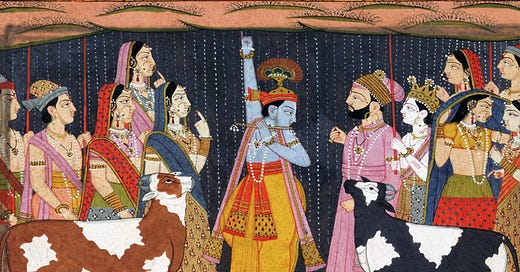Unveiling the Mysteries of Hinduism: A Journey into Beliefs and Practices | Explore the Ancient Wonders of a Timeless Faith 🕉️✨
"Dive deep into Hinduism's essence: beliefs, practices & ancient wisdom. Discover the soulful tapestry of a timeless faith. 🌟 #AncientWonders"
Introduction:
Welcome to “Ancient Wonders”, where we journey through the rich tapestry of human history. In this edition, we delve deeper into one of the world's oldest and most diverse religions: Hinduism.
Originating from the Indian subcontinent, Hinduism is not just a set of beliefs; it is a way of life, a philosophy that has stood the test of time for thousands of years.
Historical overview:
To understand Hinduism, we must first appreciate its historical roots. The term "Hinduism" itself is a Western construct, and the origins of the religion can be traced to the ancient Indus Valley civilization around 3300-1300 BC.
Over the centuries, it has absorbed diverse cultural, philosophical, and religious influences, evolving into a complex and multifaceted belief system.
Core beliefs:
At its core, Hinduism encompasses a wide range of beliefs and practices. One of its fundamental principles is the concept of Dharma – duties and righteous life that vary according to each person's age, caste, sex, and occupation.
The cycle of reincarnation, or Samsara, is another crucial belief, where the soul (Atman) goes through successive births and deaths until it reaches liberation (Moksha).
The Trimurti:
Hinduism recognizes a triad of supreme deities known as the Trimurti, representing the cosmic functions of creation, preservation, and destruction. Brahma, the creator; Vishnu, the preserver; and Shiva, the destroyer, form this divine trinity.
Each deity is revered in its own right, and devotees often align themselves with one or more of these manifestations.
Scriptures:
The sacred texts of Hinduism are vast and diverse, providing a wealth of knowledge and guidance. The Vedas, the oldest religious texts, form the basis of Hindu philosophy.
The Upanishads delve into deep spiritual teachings, while the epics Mahabharata and Ramayana narrate timeless stories and ethical dilemmas. The Bhagavad Gita, part of the Mahabharata, is a philosophical dialogue that explores the paths to self-realization.
Paths to Liberation:
Hinduism recognizes various paths (Yogas) that individuals can follow to achieve Moksha. Karma Yoga emphasizes selfless action, Bhakti Yoga focuses on devotion to a deity, Jnana Yoga focuses on knowledge and wisdom, and Raja Yoga involves the practice of meditation.
Each path caters to different temperaments and inclinations, providing a holistic approach to spiritual growth.
Caste system:
The caste system has been a controversial aspect of Hindu society. Traditionally, society was divided into four main classes of Varnas – Brahmins (priests and scholars), Kshatriyas (warriors and rulers), Vaishyas (merchants and farmers), and Shudras (workers and servants).
Dalits, or Scheduled Castes, have historically been marginalized. Although the caste system has evolved, its remnants still influence social structures.
Festivals and Rituals:
Hinduism is a religion rich in festivals, with celebrations reflecting cultural diversity. Diwali, the Festival of Lights, celebrates the triumph of light over darkness. Holi, the festival of colors, signifies the arrival of spring and the victory of good over evil.
Navaratri honors the divine feminine, and Ganesh Chaturthi pays homage to the elephant-headed god, Ganesha. Rituals and ceremonies play a crucial role in expressing devotion and seeking divine blessings.
Temples and Iconography:
Hindu temples are not just places of worship; they are architectural marvels that feature intricate sculptures, vibrant paintings, and spiritual symbolism. The deities within these temples are often adorned with specific attributes and symbols, representing various aspects of the divine. Temple rituals, known as Puja, involve offering prayers, flowers, and food to the gods.
Modern challenges and adaptations:
As Hinduism spanned millennia, it encountered numerous challenges and underwent adaptations. In the contemporary world, Hindus face questions of identity, religious pluralism, and the intersection of tradition and modernity. The global diaspora has contributed to the spread of Hindu practices across the world, fostering a dynamic and evolving faith.
Conclusion:
In this deep dive into Hinduism, we have only scratched the surface of a vast and intricate belief system. Hinduism's lasting legacy lies in its ability to adapt to changing times while preserving its ancient wisdom.
It is a religion that embraces diversity, encouraging seekers to explore various paths in their quest for spiritual enlightenment. As we continue our journey through the “Ancient Wonders,” let the exploration of Hinduism serve as a reminder of the enduring power of human spirituality and the rich tapestry of our shared history.




